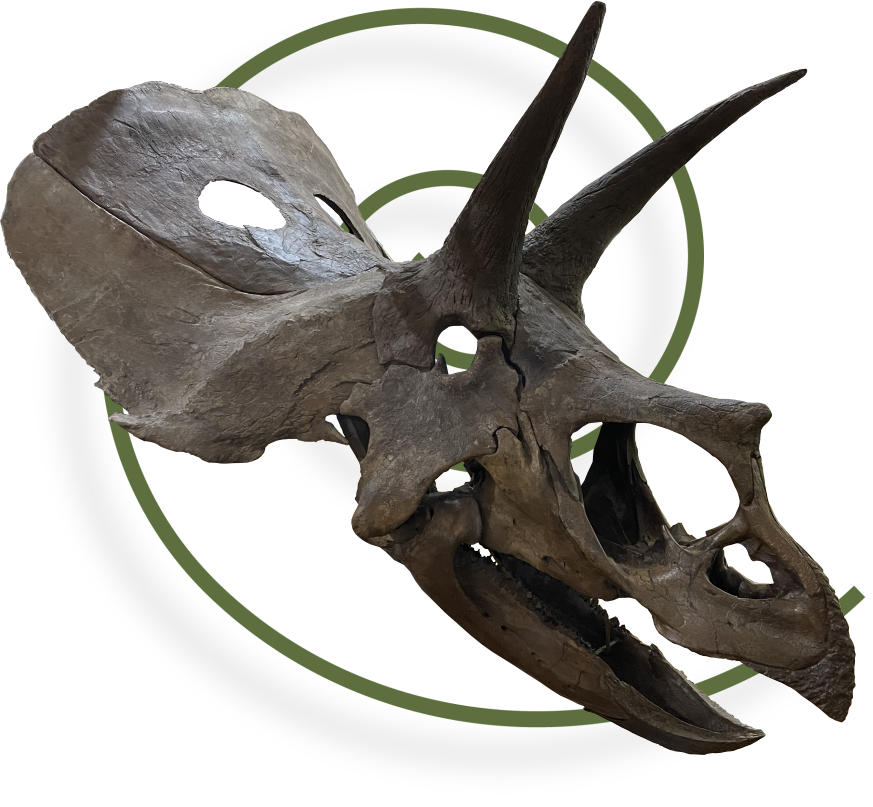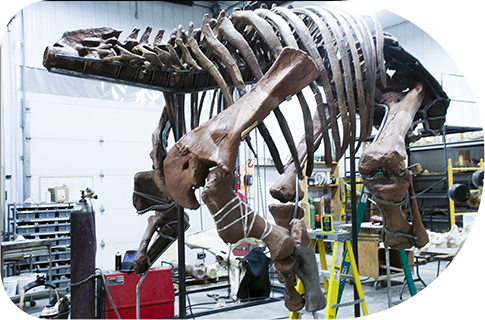Favorite CollLection Triceratops Real Figure Keyring
$11.95

Ceratopsians (Suborder Ceratopsia) are an extinct group of ornithischian dinosaurs that lived from the Early Cretaceous (135 MYBP) to the end of the Late Cretaceous (65 MYBP). This group includes “horn-faced” dinosaurs like Triceratops. Ceratopsians are distinguished by the backward extension of the bones at the rear of the skull (the squamosals and parietals). This gives the skull an elongated appearance and forms the ‘frill’ in the latter, more derived forms.
Ceratopsians also had a well developed beak, very reminiscent of living parrots. Unlike parrots, however, ceratopsians also were armed with an extensive battery of teeth used to grind vegetation. Ceratopsians possess a unique bone on the front of the upper beak, called the “rostrum”. that is found in no other group of dinosaurs.

Psittacosaurs were the earliest and most primitive of the Ceratopsian dinosaurs. Their fossils are found only in Asia, although later forms eventually migrated to North America. Psittacosaurs had neither horns nor frill, but they did possess a typical ceratopsian beak. Judging by the fossil evidence, psittacosaurs were all fairly small dinosaurs, rarely exceeding the the size of a large dog.
Frills first appeared in the Late Cretaceous. Protoceratops from Asia and Leptoceratops from Alberta were primitive forms showing more distinct backwards extensions of the rear of the skull, but no horns. More familiar horned dinosaurs, like Centrosaurus, Styracosaurus, and Pentaceratops showed up in North America about 75 million years ago.The last “horned-faced” dinosaurs included Torosaurus and Triceratops, both North American forms. These two genera persisted until the great extinction at the KT boundary. Although Triceratops is one of the most widely recognized forms, no complete skeleton has ever been found. Fortunately, enough skulls and partial skeletons have been collected to enable paleontologists to piece together a composite image of what this “last of the ceratopsians” must have been like.
Triceratops differed from its predecessors in two important ways. First it was the heaviest of the ceratopsians, literally reaching elephantine proportions. Secondly, Triceratops had perfected its skull to provide maximum protection. Its frill was a solid shield of bone up to two inches thick, completely covering the upper surface of its neck. Its horns were a meter long and were pointed, deadly weapons, capable of defending against attacks, even from Tyrannosaurus rex.
Black Hills Institute has cast and real fossil Triceratops items for sale, including skeletons, skulls, jaws, claws, horns, teeth and skin impressions.